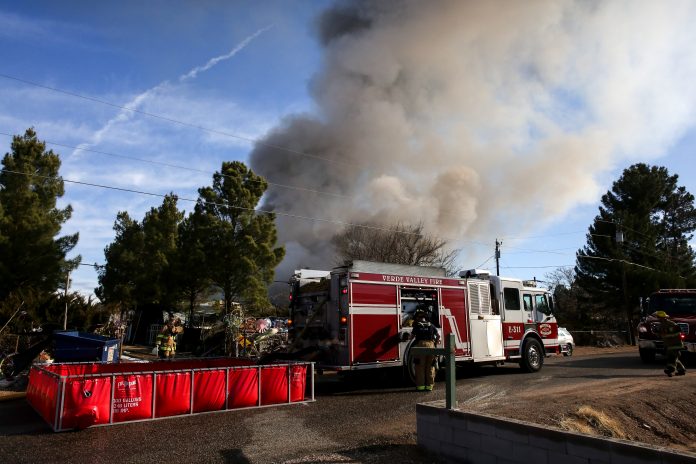Deadly wildfires are blanketing the state of California.
Over 70,000 acres are currently burning, as of press time, with thousands having evacuated, though most of the evacuation orders have now been lifted. Over 300 structures have burned.
The California Department of Forestry and Fire Protection state agency is heavily mobilizing firefighting efforts, including transferring personnel and equipment from other parts of the state to fight the blazes.
On Oct. 24, the Arizona Department of Forestry and Fire Management put out a call for 10 engines from the Grand Canyon State to aid in fire fighting. According to the ADFFM, 34 engines and nearly 120 firefighters were sent from Arizona to aid in the work in California.
Both Sedona Fire District and Verde Valley Fire District answered the call and sent firefighters to help in California.
Sedona sent five firefighters, while VVFD sent three, along with a Type 6 engine, some- times referred to as a brush truck.
“We participate every season when we have large fires that overwhelm local resources,” SFD Fire Chief Jon Trautwein wrote in an email. “It is important for us to participate in this mutual aid. We may need it at some point also.”
SFD sent one crew to fight fires near Los Angeles while Fire Capt. Pat Ojeda is working as a task force leader on the Kincade Fire near Healdsburg in Northern California.
“It’s working together to mitigate hazards,” VVFD Battalion Chief Shaun McCallum said. “They’ve got a lot of hazards going on over there. You have to have personnel to deal with that. It’s working together. Whether across borders or in state, it doesn’t matter. It’s all important to get the personnel you need. And the fact that you can work together across borders like that with another state is great.”
According to McCallum, the VVFD firefighters had been assigned not to fight the fires directly but to backfill forest service stations in the Sequoia National Forest, in order to deal with the gaps in coverage from normal firefighters being pulled away to fight the big blazes.
“That could change at any given minute,” McCallum said. “They could get a call to either go some- where, or a start within that national forest. It’s always up in the air. They could get a new start and they could get sent to it right away. You never truly know from day to day what’s going to happen.”
Both fire districts will compensated for their expended resources and labor.



